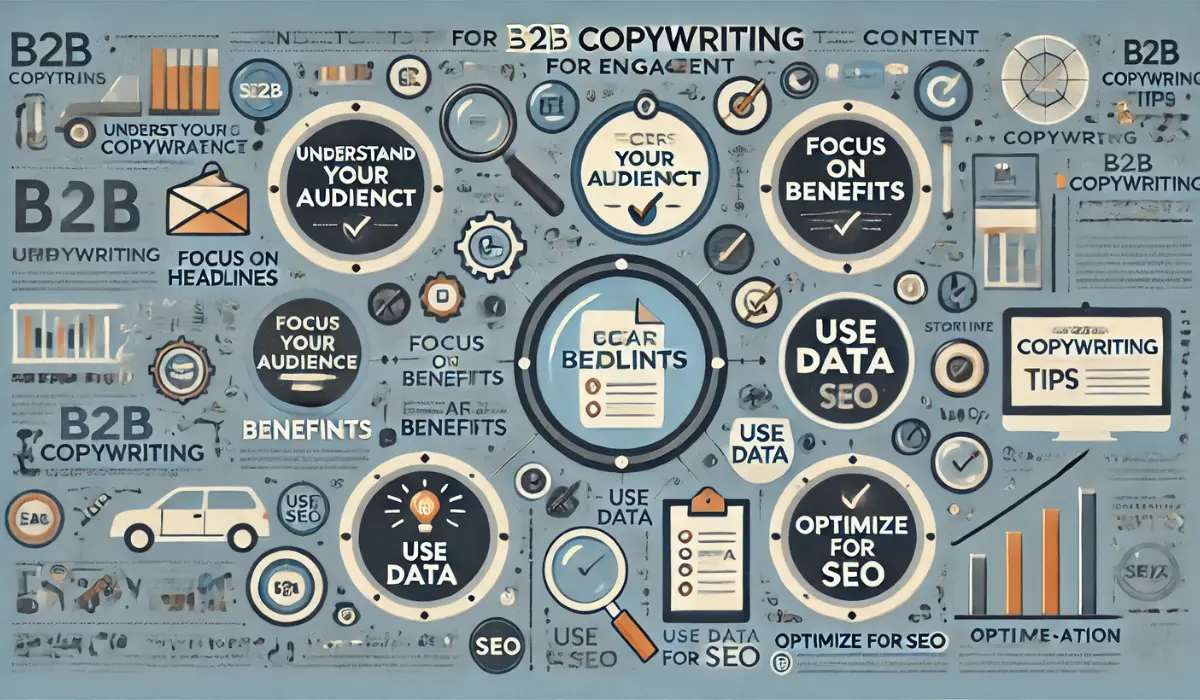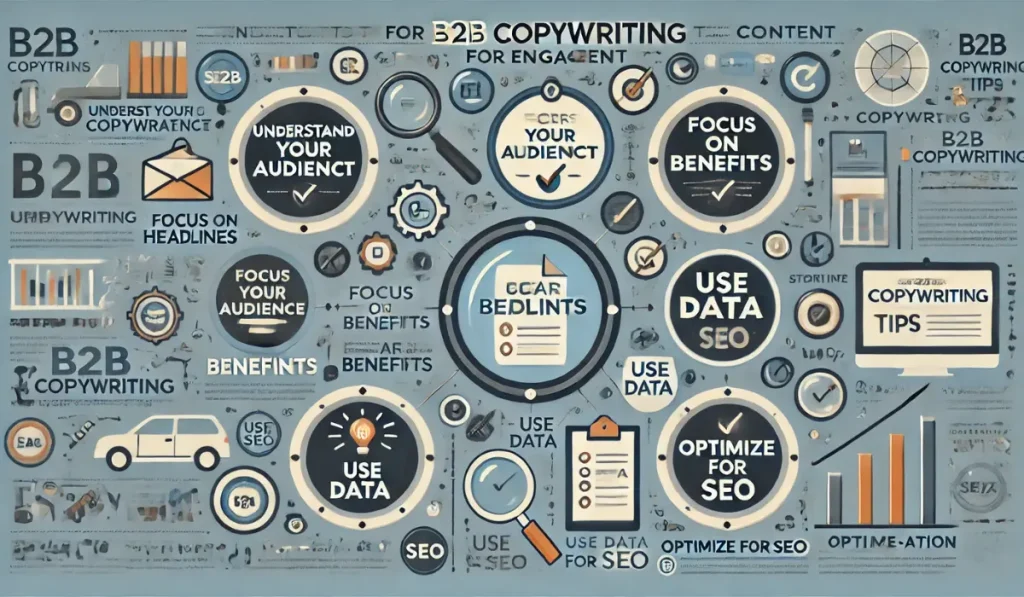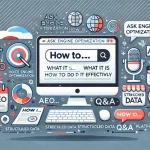In the world of B2B marketing, engaging content is not just about capturing attention—it’s about nurturing relationships, building credibility, and inspiring action. Unlike B2C, where emotion often drives purchasing decisions, B2B buyers are driven by logic, ROI, and long-term value. B2B copywriting requires balancing professionalism with creativity and focusing on your audience’s specific needs.
Let’s dive deeper into how to craft B2B content that captivates, converts, and creates lasting impact.
B2B Copywriting Tips
1. Begin with In-Depth Audience Research
The foundation of engaging B2B copywriting lies in understanding your audience. Unlike casual readers, B2B buyers are typically professionals looking for solutions to specific problems. Research your audience to determine:
- Job roles: Are they CEOs, marketing managers, or procurement officers?
- Pain points: What challenges do they face in their roles or industries?
- Motivations: Are they focused on cutting costs, increasing efficiency, or driving innovation?
Develop buyer personas to map out their needs and tailor your messaging accordingly. For instance, an IT manager may care about cybersecurity, while a CFO focuses on cost efficiency.
2. Prioritize Solutions Over Sales
B2B buyers are solution-driven. They seek products or services that address their business challenges. Your copy should emphasize the value and benefits of your offering, rather than just listing features.
Example:
- Feature-focused copy: “Our software offers real-time analytics and automated reporting.”
- Solution-focused copy: “Our software empowers your team to make faster, data-driven decisions, saving up to 10 hours a week on reporting tasks.”
When you position your product as the answer to their problem, you create content that resonates and builds trust.
3. Craft Attention-Grabbing Headlines and Openings
A compelling headline determines whether your audience reads further. In B2B copy, headlines should promise value or solutions. Open with facts, statistics, or intriguing questions that highlight the relevance of your content.
Examples:
- “Struggling with Inventory Management? Here’s How to Reduce Errors by 50%”
- “The Hidden Costs of Inefficient Supply Chains (And How to Avoid Them)”
Follow up with a strong opening that immediately addresses a pain point or introduces a benefit.
4. Maintain Clarity and Simplicity
B2B readers value clarity. Avoid complex jargon unless it’s specific to the industry and universally understood by your audience. Use concise sentences and straightforward language to ensure your message is accessible.
Example:
- Instead of: “Our innovative SaaS solution synergistically optimizes enterprise resource management frameworks.”
- Write: “Our SaaS platform streamlines your resource management, saving time and reducing costs.”
Remember, clarity builds trust and ensures your message is understood.
5. Use Storytelling to Build Emotional Connections
While B2B buyers focus on logic, emotions still play a role. Storytelling makes your content memorable and relatable. Share customer success stories, real-world applications, or the journey behind your brand to humanize your message.
Example:
“Before partnering with us, ABC Corp struggled with frequent shipping delays. After implementing our logistics solution, they reduced delays by 30% and improved client satisfaction, becoming a leader in their industry.”
Stories like this add authenticity and inspire confidence.
6. Support Claims with Data and Evidence
B2B buyers are skeptical by nature. Back your claims with credible data, testimonials, or case studies to build trust. Provide evidence that your product or service delivers measurable results.
How to Incorporate Data:
- Include statistics: “80% of our clients report a 25% increase in productivity.”
- Use customer testimonials: “‘This platform revolutionized our workflow!’ – John Doe, CEO, XYZ Ltd.”
- Highlight case studies: Provide detailed success stories showcasing the problem, solution, and results.
7. Address Multiple Stakeholders
In B2B, buying decisions often involve a group of stakeholders with different priorities. Tailor your content to address their unique concerns:
- For IT professionals: Focus on technical reliability and security.
- For finance teams: Highlight cost savings and ROI.
- For operations managers: Emphasize efficiency and scalability.
A well-rounded message appeals to everyone involved in the decision-making process.
8. Use Calls-to-Action (CTAs) Strategically
Every piece of B2B content should have a clear Call-to-Action (CTA). A strong CTA guides readers on what to do next—whether it’s downloading a whitepaper, scheduling a demo, or contacting your team.
Effective CTA Examples:
- “Download our free guide to boosting productivity.”
- “Schedule a free consultation and transform your supply chain.”
- “Start your 14-day free trial today—no credit card required.”
Ensure your CTAs are actionable, benefit-driven, and easy to follow.
Also Read
9. Focus on Long-Form, Value-Packed Content
B2B buyers often seek in-depth information to make informed decisions. Invest in creating:
- Whitepapers and eBooks: Provide detailed insights or solutions.
- Case Studies: Showcase successful outcomes with your product.
- Blog Posts: Offer actionable tips and thought leadership.
Ensure every piece of content delivers value, positioning your brand as an industry expert.
10. Leverage SEO for Visibility
Your content needs to be discoverable. Optimize for search engines by:
- Using industry-specific keywords.
- Writing meta descriptions and title tags.
- Including internal links to related resources.
Example:
For a company selling logistics software, keywords like “logistics optimization tools” or “reduce shipping costs” could attract your target audience.
11. Personalize Content for Maximum Impact
B2B buyers appreciate tailored messaging. Use insights from CRM tools or analytics to create content specific to:
- Industry: Customize examples for their sector.
- Buyer stage: Craft different messages for awareness, consideration, and decision phases.
- Behavior: Personalize follow-ups based on their past interactions with your website or emails.
12. Write for Multi-Platform Consumption
B2B buyers interact with content across multiple platforms. Tailor your copy for:
- LinkedIn: Thought leadership posts and targeted ads.
- Email campaigns: Short, persuasive copy with a clear CTA.
- Web pages: SEO-optimized, skimmable content.
- Webinars or videos: Scripted narratives to engage visual learners.
Repurpose content to ensure consistent messaging across channels.
13. Appeal to Logic and Emotions
While logic drives most B2B decisions, emotions can seal the deal. Combine:
- Logical appeals: Highlight ROI, efficiency, or cost savings.
- Emotional appeals: Emphasize trust, reliability, or industry leadership.
Example:
“Our platform guarantees 99.9% uptime (logic) so you can confidently deliver on your promises (emotion).”
14. Keep Testing and Refining
Even the best copy can improve. Use A/B testing to determine which headlines, CTAs, or formats perform best. Analyze metrics like:
- Bounce rates
- Time spent on the page
- Conversion rates
Make data-driven adjustments to optimize performance over time.
15. Stay Current with Trends
B2B industries evolve rapidly. Stay informed about your audience’s latest challenges, trends, and technologies. Incorporate timely topics or innovations into your content to remain relevant.
Conclusion
B2B copywriting is both an art and a science. By focusing on your audience, addressing their pain points, and delivering clear, solution-oriented content, you can craft copy that engages and converts. Whether you’re writing emails, blog posts, or landing pages, these tips will help you create impactful B2B content that stands out in a crowded marketplace.
Key Takeaway
Effective B2B copywriting is not about selling; it’s about building relationships, demonstrating value, and fostering trust. With the right strategy and consistent effort, your content can drive long-term business success.





